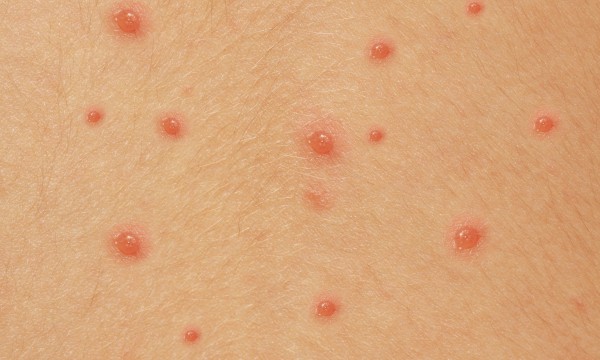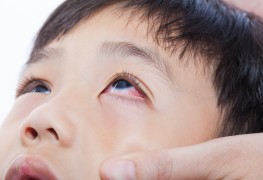Spots and rashes can be a scary thing to find, especially when you don't know how it was caused. Here are a few hints for diagnosing the rash and treating it.
- Browse Categories
- All Tips
-
Home & Garden
- All
- Appliances
- Bathroom
- Cleaning
- Crafts
- Decorating
- Electrical
- Flooring
- Furniture
- Garage Door
- Gardening
- Green Living
- Heating
- Home Alarm Systems
- Home Maintenance
- Home Remedies
- Home Security
- Home Staging
- House Sitting
- Junk Removal
- Kitchen
- Lawn Care
- Lock Systems
- Moving
- Outdoor Living
- Pest Control
- Plumbing
- Renovation
- Roofing
- Snow Removal
- Storage
- Tools
- Tree Service
- Health
- Family
- Travel
- Auto
- More Tips
Your account is now active!

Helpful hints for identifying spots and rashes
July 28, 2015

Measles
Incubation period:
- Acute, highly communicable viral disease.
- About 10 days.
Look for:
- Greyish-white "Koplik's spots" on a red background inside the cheeks and on the throat.
- Two to four days after initial symptoms there will be a brown, spotty rash, usually starting behind the ears and around the hairline, spreading around the head and neck, then to the legs and over the body.
- The spots are initially small, but quickly increase in size and may join together to form angry-looking blotches.
- The measles rash isn't intensely itchy.
Spread by:
- Contact with fluids from the respiratory tract, such as coughs and sneezes.
Exclude from school and child care:
- Keep your child at home for four days after the first rash appears.
Rubella (German Measles)
Incubation period;
- Often experienced as a milder illness than measles.
- 14 to 21 days.
Look for:
- Pink and flat rash, of very small spots, similar to a measles rash but less extensive.
- It starts at the hairline, face and neck, before spreading to the body, arms and legs.
Spread by:
- Contact with fluids in the respiratory tract, such as coughs and sneezes.
Exclude from school and child care
- Isolate for seven days after onset of rash.
Pregnant women:
- Must not be exposed to rubella, which can seriously damage a developing fetus, especially in the early weeks.
Chicken Pox
Incubation Period:
- Highly communicable
- Most infectious from a day or two before rash appears.
- 14 to 16 days.
Look for:
- Small, flat red spots, which become raised, forming fluid-filled round blisters ("vesicles") against a red background.
- In the third stage the vesicles crust over.
- The rash is intensely itchy.
- It starts on the trunk before spreading to the face, arms and legs.
- Spots may also be found on the eyelids, and on the inside of the mouth and the vagina.
Spread by:
- Contact with fluids in the respiratory tract or by contact with fluid from an infected person's blisters.
Exclude from school and child care:
- From when spots first appear until all sores are crusted over (about five days after onset of blisters).
Fifth Disease
Incubation period:
- Viral infection.
- 13 to 18 days.
Look for:
- Bright red and slightly raised rash on the cheek, developing a lacy appearance that lends a blotchy look, and spreading to the body, arms and legs.
- Other symptoms — high temperature, sore throat and headache — appear up to a week before the rash.
Spread by:
- Contact with fluid in the respiratory tract.
Lasts for:
- Around five days, but the rash may return for a few weeks.
- Once the rash appears, the disease is no longer infectious, so there's no need to exclude from school or child care if the child feels well enough. It can cause complications during pregnancy.
Eczema (atopic dermatitis)
Look for:
- Inflammatory skin condition.
- Itchy, dry and hot, or broken, raw and bleeding skin, most commonly on the face and neck, the inside of the elbows, and the knees and ankles.
- In infants, more typically found on the forehead, cheeks, scalp, neck, forearms and legs.
- Severity can vary.
- Isn't contagious.
- No need to exclude from school.
Ringworm
Look for:
- Burning ring that expands outwards.
Spreads by:
- Caused by a fungus, not a worm.
- Skin contact with an infected person, through shared towels, bedding and facecloths; also passed on through pets.
- There's no need to exclude from school or child care so long as they follow their treatment — usually an anitfungal cream — and take care with their hygiene.
These hints are meant to help diagnose your rash and put your mind at east. As always, see your doctor if a rash doesn't fade overnight or if the rash is quite painful. Call an ambulance if your child has difficulty breathing or swallowing or is abnormally drowsy.
National advertising powered by Mediative.com. Yellow PagesTM, Walking Fingers & DesignTM, YP.caTM, Find. & DesignTM, YellowPages.caTM, Canada411TM and YP ShopwiseTM are trademarks of Yellow Pages Digital & Media Solutions Limited in Canada. All other trademarks are the property of their respective owners. Copyright © 2018 Yellow Pages Digital & Media Solutions Limited. All Rights Reserved.
More Tips
The material on this website is provided for entertainment, informational and educational purposes only and should never act as a substitute to the advice of an applicable professional. Use of this website is subject to our terms of use and privacy policy.






